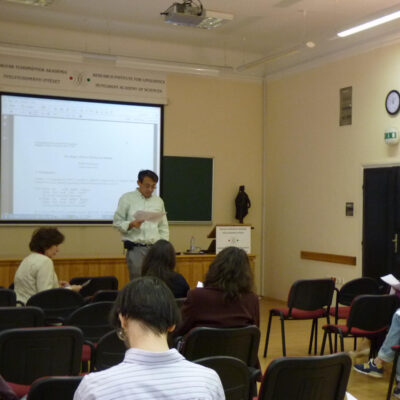Extended predicate formation and the non-agentive verb suru ‘do’ in Japanese
In this talk, I first argue for a three-layered verbal structure consisting of the head sequences of v-V-R, where R is a predicate root, v and V are functional projections fixing the transitivity and the category of R, respectively. After confirming the presence of the three-layered verbal structure in Japanese, I proceed to argue that while ordinary arguments are merged with vP or VP, the lowest DP or adverbial selected by non-agentive suru is merged with R to derive an “extended” predicate (i.e. RP), since the verb does not have a sufficient semantic content to qualify as a full-fledged root (or predicate). It is argued that the phrasal expression forming part of the extended predicate RP does not receive a theta role, and thus displays syntactic distributions differing from those observed for ordinary arguments, which receive theta roles.
Presenter
